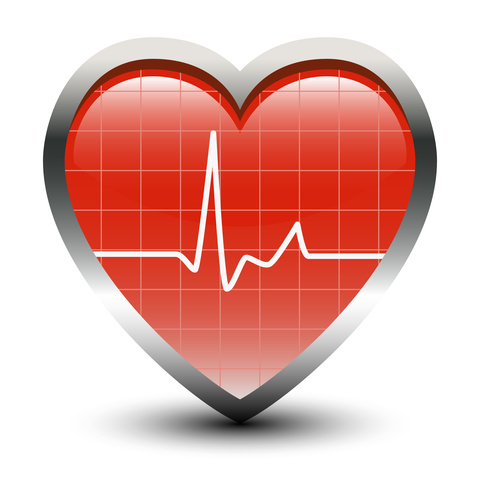The GSMA has announced that mobile technology will play a significant role in the provision of healthcare services globally and predicts the growth of the mHealth market will lead to a revenue opportunity worth US$23 billion by 2017.
The findings are from a new report, ‘Touching Lives through Mobile Health: Assessment of the Global Market Opportunity’, conducted by PwC for the GSMA, which looks at the key challenges the healthcare industry is facing worldwide and the opportunity mobile technology provides in overcoming these challenges.
The report suggests that in spite of the advancements in medical technologies and a general increase in income levels, healthcare continues to pose challenges of affordability, complexity and access across the world. In contrast, mobile access is almost ubiquitous. With the increasing penetration of smartphones and new and innovative ‘connected devices’, and the proliferation of Mobile Broadband networks and services worldwide, mobile will play a far greater role in healthcare in both developed and developing countries in the future.
“By 2017, mobile technology will be a key enabler of healthcare delivery reaching every corner of the globe,” said Jeanine Vos, Executive Director, mHealth at the GSMA. “With developed countries needing to reduce the cost of universal healthcare, and developing countries looking to roll out life-saving services to in-need communities, mobile technology offers the ability to deliver highly effective, scalable and affordable healthcare beyond the confines of a hospital or doctor’s surgery.”
In terms of the market opportunity, the research found that the provision of pervasive mHealth services and applications worldwide could provide mobile operators with revenues worth approximately US$11.5 billion by 2017. Device vendors could benefit from a revenue opportunity of US$6.6 billion, content and application providers US$2.6 billion, and healthcare providers US$2.4 billion by 2017.
Europe would become the largest mHealth region by 2017 with revenues of US$6.9 billion. Asia Pacific would be the second-largest region with revenues of US$6.8 billion, North America could account for US$6.5 billion, Latin America US$1.6 billion and Africa US$1.2 billion. In terms of individual countries, the United States could benefit from revenues of US$5.9 billion, accounting for a quarter of the global mHealth market by 2017, and revenues in China and Japan could reach US$2.5 billion and US$1.4 billion respectively.
To enable this opportunity, however, governments, regulators and healthcare providers need to work with mobile operators and organisations in the broader mHealth ecosystem, including device vendors and content and application players, to support the roll-out and adoption of new mHealth services. This includes several key factors:
• Government support: Only when Governments worldwide embrace constructive policy agendas for mHealth, will the market start to achieve its potential and scale rapidly. Governments should take steps to adopt the concept of mHealth as an effective way to improve access to and affordability of healthcare. This includes encouraging the use of mHealth services by public healthcare providers and incentivising private providers to deliver mHealth services.
• Regulatory support: Regulators need to proactively address the issues that currently limit the growth of mHealth services, certification, interoperability and standardisation.
• Healthcare industry acceptance: Clear benefit studies from key players in the mHealth ecosystem, as well as government support, are vital to driving acceptance in the medical profession.
• User adoption: Widespread user adoption will help drive the exponential growth and market opportunity for mHealth. This will be supported by recommendations from medical professionals, overall service affordability and widespread availability of content and devices.
“There’s no doubt that collaboration is critical. Leading carriers, device manufacturers, health plans and providers all need to come together to help transform mHealth from a niche play into widescale implementation as a standard of care,” said Eleanor Chye, Executive Director, Mobility Healthcare and Pharma, Mobility Product Management, AT&T Business Solutions. “All of us have to step up and adopt these solutions and drive them into the care delivery system. It’s going to take adoption on the patient side and integration on the delivery side.”
Monitoring services, such as those for chronic disease management, will account for 65 per cent of the market (US$15 billion) by 2017. One example is T-Mobile’s CardioMessenger Service that offers remote cardiac monitoring for patients in Germany.
Diagnosis services will be the second-largest segment, comprising 15 per cent of the global mHealth market (US$3.4 billion). This includes mobile telemedicine and health call centres that allow those in isolated areas to connect with healthcare professionals, such as the Telenor Teledoctor service in Pakistan, which offers 24/7 access to qualified physicians.
Treatment services will be the third-largest revenue opportunity at 10 per cent of the overall market (US$2.3 billion). Current examples include services that ensure patients adhere to treatment schedules, such as Vitality Glow Caps that remind users via SMS and through calls that they should take their medication.
Ms. Vos added: “This report not only highlights the revenue opportunity mHealth will provide, but crucially, it also proves the feasibility of mobile services supporting healthcare is greater than ever before. mHealth is not only here to stay, but is expected to drive major changes in the delivery of healthcare worldwide. “However, it is critical that governments and regulators the world over, as well as the healthcare profession, embrace this opportunity and work with the mobile industry to ensure that it is fully realised.”










